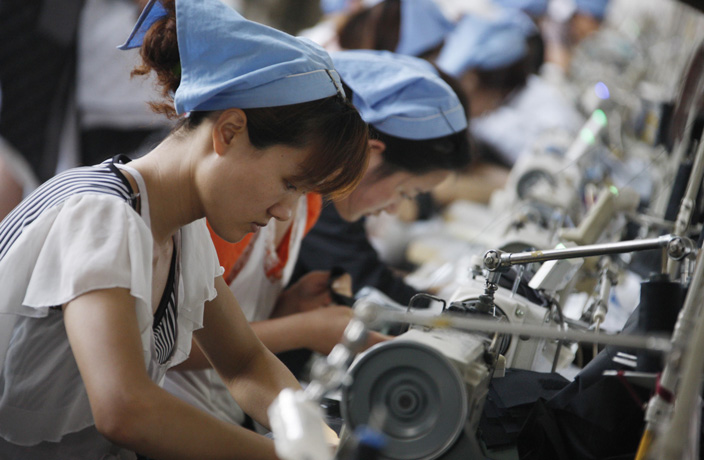How well do Chinese people know China? The latest Ipsos Mori survey, released this Wednesday, reveals mainlanders overestimate the number of immigrants and obese among them, while underestimating the number of female politicians, among other social stats.
The survey, titled ‘Perils of Perception 2015’, measures misconceptions around the globe and could be considered an ‘Index of Ignorance’ of sorts.
Although several years old, this year’s 2015 survey included a number of new questions (specifically relating to inequality, obesity and the proportion of female politicians) and was the largest ever, with 33 countries participating. For a rundown on this survey’s methodology, see the bottom of this article.
Below is a breakdown of China’s answers:
On Immigration
The Question: What percentage of the China population do you think are immigrants to this country (i.e. not born in China)?
China Answered: 11 percent
The Actual Answer: 0.1 percent
In this instance, the China answer shows a serious lack of understanding when it comes to Chinese visas – which are a real nightmare for foreigners. If the Chinese estimate were correct, there would be a staggering 154,174,526.99 immigrants in the country (according to China’s 2015 population estimate of 1,401,586,609), which is close to half the population of the United States.
China was not alone in exaggerating the percentage of the population born overseas, every country except Israel and Saudi Arabia overestimated.
On the Non-Religious

The Question: Out of every 100 people in China, about how many do you think do not affiliate themselves with any religion – that is, atheists, agnostics and those who say they do not identify with any religion?
China Answered: 57 percent
The Actual Answer: 52.2 percent
Within five percentage points, not bad China, especially considering those surveyed in the US and UK exaggerated the non-religious percentage by 24 and 20 points respectively. The only two countries that didn't overestimate were South Korean and Japan.
On the Wealthiest 1 Percent
The Question: What proportion of China’s total household wealth do you think the wealthiest 1 percent own?
China Answered: 56 percent
The Actual Answer: 39 percent
China was definitely not alone on this one, with most countries overvaluing the wealth of the country’s richest 1 percent.
On Obesity

The Question: Out of every 100 people aged 20 years or over in China, how many do you think are either overweight or obese?
China Answered: 34 percent
The Actual Answer: 28 percent
In a country where people have few qualms telling complete strangers they are ‘fat’, is it any surprise the Chinese guessed six points higher than the actual answer? China, India and Japan all thought there were more overweight people than there actually are, while South Korea is the only country whose answer matched reality.
On Female Politicians
The Question: What percentage of politicians in the lower or single house – eg in Britain it would be members of parliament (MPs) – in China are women?
China Answered: 21 percent
The Actual Answer: 23.6 percent
Clearly the Chinese know more about women in politics than immigrants.
A number of countries, including Russia, Mexico and New Zealand, had an error rate of over 10 points.
On the Average Age

The Question: How old do you think the average person in China is?
China Answered: 56 years old
The Actual Answer: 36.7 years old
No need to feel bad China, every nation that participated in the survey thinks its population is older than it actually is.
On Youth
The Question: Out of every 100 people in China, about how many do you think are aged 14 or younger?
China Answered: 23 percent
The Actual Answer: 17.1 percent
Despite the findings from the question above, respondents in every country surveyed, with the exception of Israel, believed kids 14 and younger make up a larger share of the population.
On Female Employment

The Question: Out of every 100 working-age women in China, about how many do you think are in employment?
China Answered: 63 percent
The Actual Answer: 61.7 percent
This answer was China’s closest to the correct percentage. With economics being a major topic of discussion in China this year, it comes as no surprise that the Chinese have taken an interest in the state of their workforce. Either that or the Chinese are really in tune with what women are up to in society (our second closest answer was woman in politics). Germans were over 10 points off the actual percentage, while the Americans, Norwegians and Belgians were directly on target.
On Internet access
The Question: Out of every 100 people in China, about how many do you think have access to the Internet at home either through a computer or mobile device?
China Answered: 72 percent
The Actual Answer: 46 percent
China was way off the mark with this one, possibly because the people who took part in the survey did so online – it’s difficult to say.
According toThe Guardian’s survey analysis, emerging nations tended to overestimate connectivity while countries with advanced economies tended to guess below the actual level.
On Rural Areas

The Question: What percentage of people in your country live in a rural area, that is, outside of a big town or city?
China Answered: 52 percent
The Actual Answer: 45.6 percent
Respondents in China, Ireland, Montenegro, Poland, Russian and Saudi Arabia were the only ones to not get this question wrong by more than 10 points. The remaining 27 nations majorly dropped the ball on this one.
> Head over to The Guardian webpage to take the survey.
> Ipsos Mori conducted this year’s survey from October 1-16 and online interviewed more than 25,556 individuals from 33 countries. Data is weighted to match with the population profile of each country. Participating countries: Argentina, Australia, Belgium, Brazil, Canada, Chile, China, Colombia, France, Germany, Great Britain, Hungary, India, Ireland, Israel, Italy, Japan, Mexico, Montenegro, the Netherlands, New Zealand, Norway, Peru, Poland, Russia, Saudi Arabia, Serbia, South Africa, South Korea, Spain, Sweden, Turkey and the US. About 1,000-plus individuals were surveyed in Australia, Brazil, Canada, China, France, Germany, Great Britain, Ireland, Italy, Japan, Serbia, Spain, Montenegro, the Netherlands, Norway, Sweden, and the US.
[Survey numbers from The Guardian and Perils of Perception’s webpage.]
[Images via: 101threads.com (Non-Religious), MD News Media (Obesity), monkeyabroad.com (Average Age), South China Morning Post (Female Employment), Wikimedia Commons (Rural Areas)]





















0 User Comments